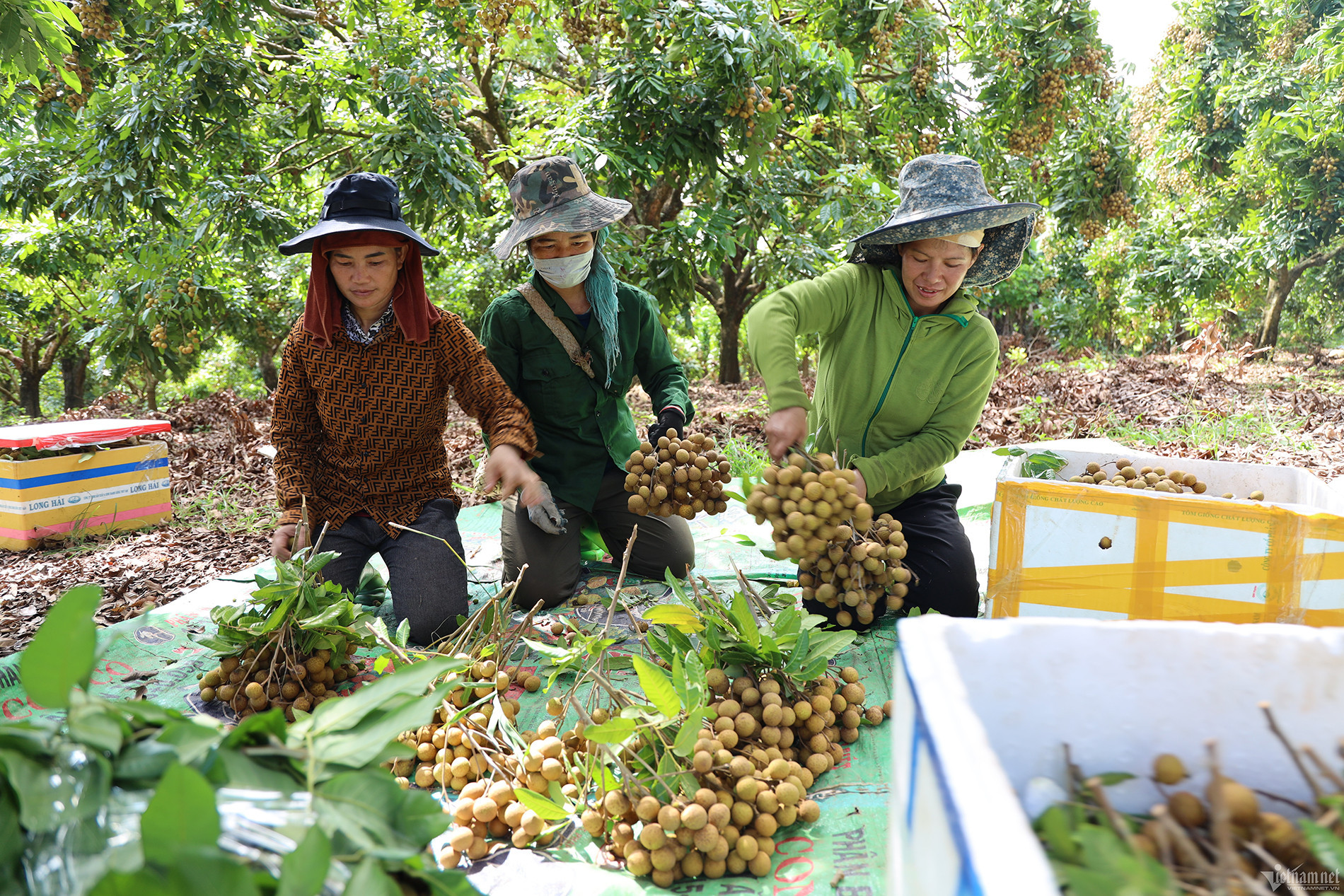
“More than 10 years ago, in the high mountainous area of Co Noi commune in Mai Son district of Son La province, there were only maize and sugarcane fields. The income from maize and sugarcane farming was unstable and the life of local people were tough. But since the day we shifted to farming fruit trees, the life is getting better,” said Nguyen Huu Tu, director of Me Lech Cooperative.
The cooperative, with 26 member households, now has 150 hectares of custard-apple growing area. The custard-apple hills are supervised by cameras, and watered by an automatic watering system operated by smartphones.
In recent years, farmers began growing custard-apples with organic standards and VietGAP, and the products are sold to shops and supermarkets under contracts signed between farmers and retailers. Farm produce is also sold on e-commerce platforms and TikTok Shop.
“We have had a bumper crop with high yield and high prices. Farmers began harvesting custard-apple from mid-year until Tet holiday,” Tu said, adding that net profit from custard-apple farming is VND600 million per hectare.
Tu has six hectares of custard-apple growing area, but can harvest fruits on three hectares only. He revealed that the profit he pocketed was billions of dong.
“Fruit tree growers in our locality all have become rich,” he said, revealing that the members of the cooperative can earn from VND1 billion (for small growing area), to VND2-3 billion (medium-sized farming).
Some households in the highlands have become wealthy with an income of VND7-8 billion each from custard-apple alone.
Not only custard-apple, but strawberry farming also brings high profits. Nguyen Van Nam, director of Xuan Quy Strawberry Cooperative, told VietNamNet that the cooperative has 60 hectares of strawberry on vast hillsides. The harvesting for strawberry lasts from November to April.
As the product sells at high prices, strawberry growers can pocket VND300-400 million worth of profit for every hectare.
Nguyen Thach Tung Linh, director of a company in Moc Chau, revealed that farming households cooperate with the company to grow passion fruit can make a profit of hundreds of millions of dong a year.
In the mountainous province of Son La, more and more billionaires have appeared, from passion fruit, longan, strawberry to mango and plum.
New life
The lives of local people began changing seven years ago. Prior to 2015, Son La was known as a maize and cassava growing province. In the land, hunger and poverty clung to locals’ lives.
According to former Son La provincial Party Committee Secretary Hoang Van Chat, in 2015, after the 14th provincial Party Congress, SonLa began a ‘revolution’ in agriculture by growing fruit trees on sloping land and giving financial support to farmers to develop farming. At that moment, there were only 30,000 hectares of fruit tree area.
Within two years, 90,000 households improved their gardens to grow fruit trees and received financial support of VND18 billion. Farmers learned cross-breeding techniques, variety distinguishing, and organic farming.
Officers are sent to training centers to learn about modern farming models and provide knowledge to farmers.
Meanwhile, local authorities, with support from the Ministry of Agriculture and Rural Development (MARD), invited big enterprises to the province to build fruit processing plants with the most advanced technologies.
Nafoods Tay Bac, for example, built a veggie and fruit processing plant with the capacity of 10,000 tons a year in Moc Chau district. TH Group injected VND2.3 trillion into a processing plant in Van Ho, while Doveco developed a fruit processing center in Mai Son.
After 10 years of developing fruit trees on sloping hills, the total fruit tree area in Son La reached 84,000 hectares which provide 453,600 tons of fruits a year. With the figure, Son La has surpassed Tien Giang (82,000 hectares) to become the leading ‘fruit tree metropolis’ of the country.
Son La has also become the largest fruit processing center in the northwest with plants invested by large corporations. About 30 percent of fruits in the province are processed for domestic consumption and export.
With its great achievements, the name ‘Son La’ now resounds at important national conferences and events. It is called an ‘agriculture phenomenon’ with the success of replanting on sloping land.
Tam An